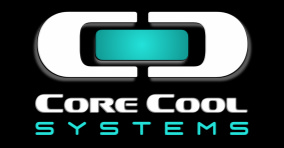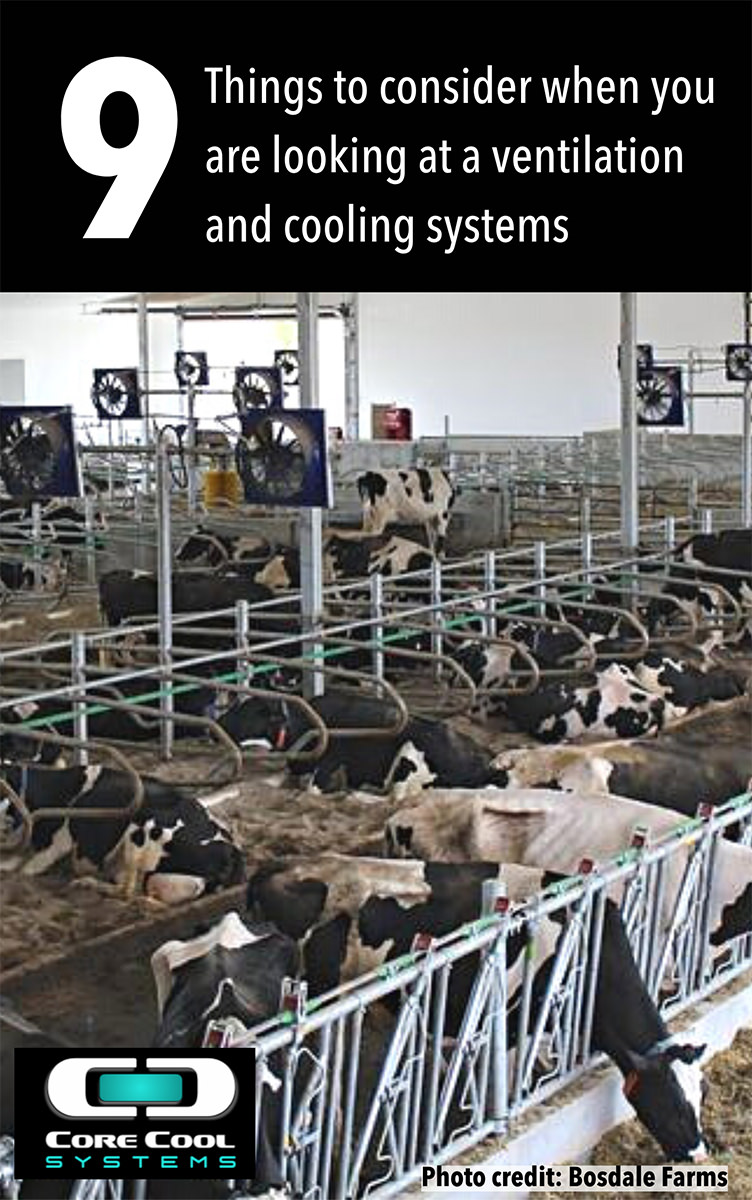Title search: ✖
|
Show All (52)
Cooling Cows (29) Cow Comfort (6) Dry Cow Cooling (1) Fall Lameness (2) FAQ's Answered (7) Metabolic Issues (2) Reproduction (2) Why Focus on Core Body Temperature (5)
FAQ - Why should I cool my dry cows? What impact does heat stress have on the cow, her next lactation, the calf in utero
Why is it important to keep cows' core body temperature cool, and how does Core Cool Systems achieve this?
Maximizing Dairy Herd Reproductive Health: Understanding the Impact of Heat Stress and Investing in Cooling Solution.
Are your summer electricity bills causing you to shudder? Maybe your barn fans are one of the biggest culprits.
Why is it important to clean your fans before summer? Are dirty fans costing you time, money and energy?
|
How does Core Cool Systems offer Evaporative Cooling when the Humidity is High?Have you ever experienced a day so humid that you find yourself dripping in sweat sitting in the shade on the front porch? Those days are brutal. Imagine how those days feel for your cows! They can't sweat the way we do to help regulate their body temperature. We know how damaging high heat and high humidity can be to cattle health and performance. What is exactly is humidity? Humidity is the amount of water vapour in the air. Too much or too little humidity can be dangerous. For example, when we add high humidity with high temperatures, we get a combination that causes severe heat stress in dairy cattle. Humidity plays a vital role in our ability to manage heat stress on farms. When we talk about humidity, there are two different terms: absolute humidity and relative humidity. So how does humidity affect the evaporative cooling of cows on a hot day? If the humidity is low, evaporative cooling is much easier. The dry air helps the added moisture evaporate and produce a chilling effect on the blood flowing just below the surface of her skin. Like when you're standing on the hay wagon on a hot July day, sweating buckets and a warm breeze blows past, and you suddenly feel pleasantly cooler. In areas where the relative humidity is high, the air is already saturated with water vapour, so it can't gather as many moisture molecules as it travels past. This is when airspeed AND intelligent water cooling determined by the temperature-humidity index in the barn becomes crucial. The fully saturated air needs to be exhausted often by very high airspeed to combat the humidity. Fresh drier air needs to be pulled into the barn, gather as much moisture from the air as possible and be exhausted out of the barn. There need to be as many fresh air exchanges per hour as possible to continually pull moisture molecules from the air. Airspeed is the key; 7-9 mph is needed in high humidity environments—enough water to provide evaporative cooling but not enough to soak the cow. Using massive amounts of water to completely soak the cows adds huge amounts of moisture into the already saturated air adding to the humidity AND wastes a very precious resource on a hot day. Water. Trust me. There is nothing worse than 100 thirsty cows banging at an empty water trough on a hot day cause the bunk line soakers drained the well! Research has proven that low-pressure, low-water volume water cooling can achieve the same cooling results as high-pressure, high volume water cooling, Cooling with low-pressure vs. high-pressure research study while using 43-75% of the water of soaker systems. The Core Cool system injects a timed, fined mist intermittently meaning the water system shuts off so soaking the coat doesn’t happen. For example, the water may be on for one minute then off for 3-5 minutes to allow time for it to evaporate and for the airspeed to move the fully saturated air out of the barn. That is how the system is able to cool even when humidity levels are very high. Systems that offer less airspeed can't exhaust the moisture-laden, saturated air fast enough to combat the humidity and provide cooling to the cows. How about dealing with high humidity in cooler months? In areas where humidity is high throughout the cooler winter months, a Core Cool System can greatly impact herd health and productivity. Ever walk into a barn in the winter and have that thick, stagnant air hit you right in the face? Has that heavy air hitting your lungs made you cough? Of course, we have all experienced that. The variable speed capabilities of a Core Cool System mean that we can program the fans to come on at less than 50° F10 °C. Operating at 30% power, the fans are incredibly efficient and quiet. Cows are continually breathing condensation into the air. Generating moisture that can accumulate in the air. The system comes on, dries up all the condensation, moves the stale air out and brings in fresh dry air. Stand By Mode is the mode a Core Cool system is in when the temperature is below 10 °C. A new feature of the Core Cool system is that in standby mode, the fans continue to turn slightly, helping dry the condensation and humidity from the air. The air won't be moving fast enough to cause a chill. It will just gently push the air along and out of the barn. Keeping the air fresh and dry. So the answer to the question, Can you use evaporative cooling in high humidity? The versatility of the Core Cool system creates extreme value for our customers and their cows. When cows are provided with consistency, they can reach and maintain their full potential. Core Cool Systems offers this consistency. Every day will feel like a cool spring day. Imagine the possibilities. For more information, Talk to a Core Cool Systems representative or check out www.corecoolsystems.com Share: https://www.corecoolsystems.com/blog/Blog10/Evaporative-cooling-in-High-Humidity-areas Share Category "Cooling Cows": |

